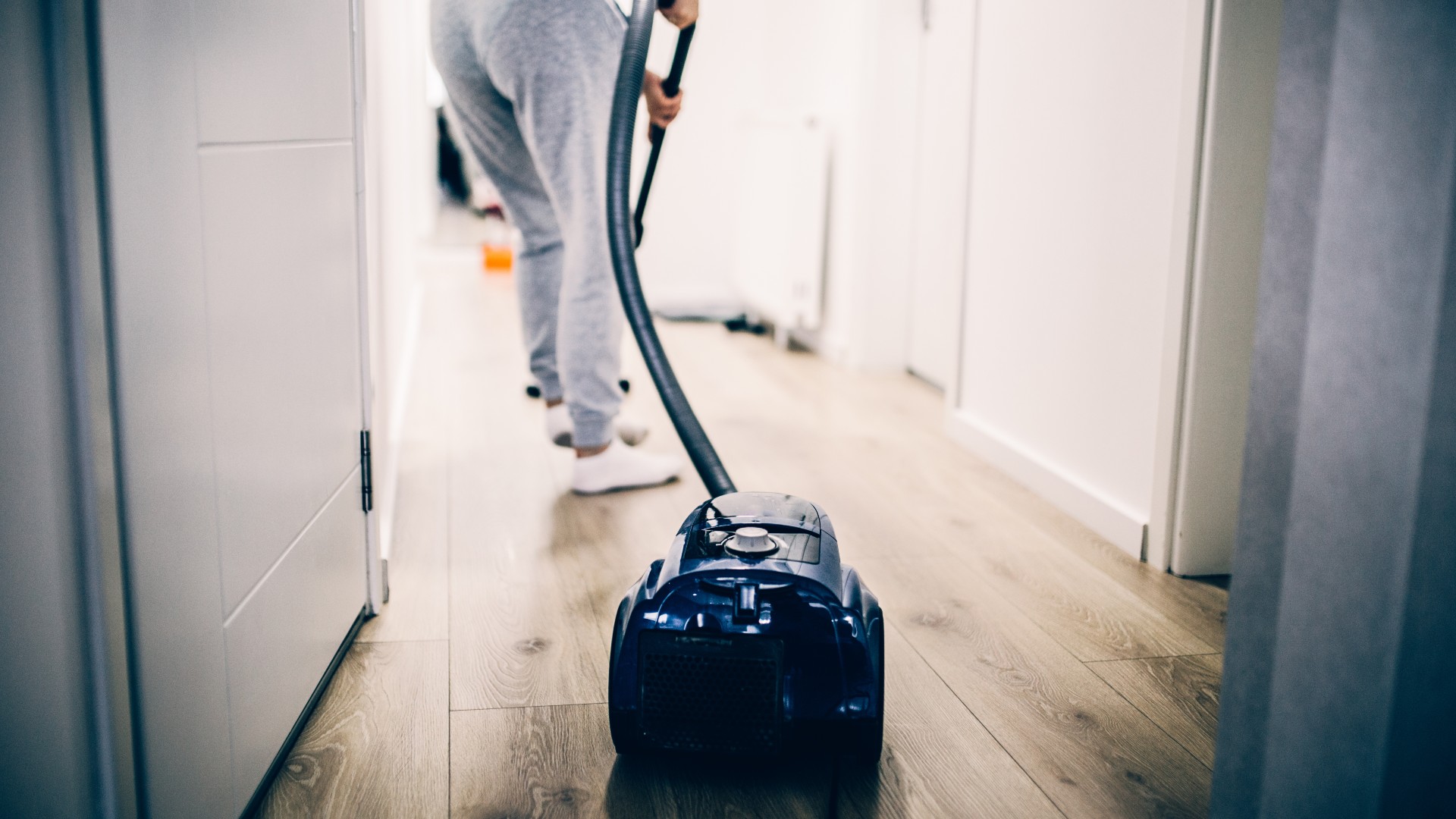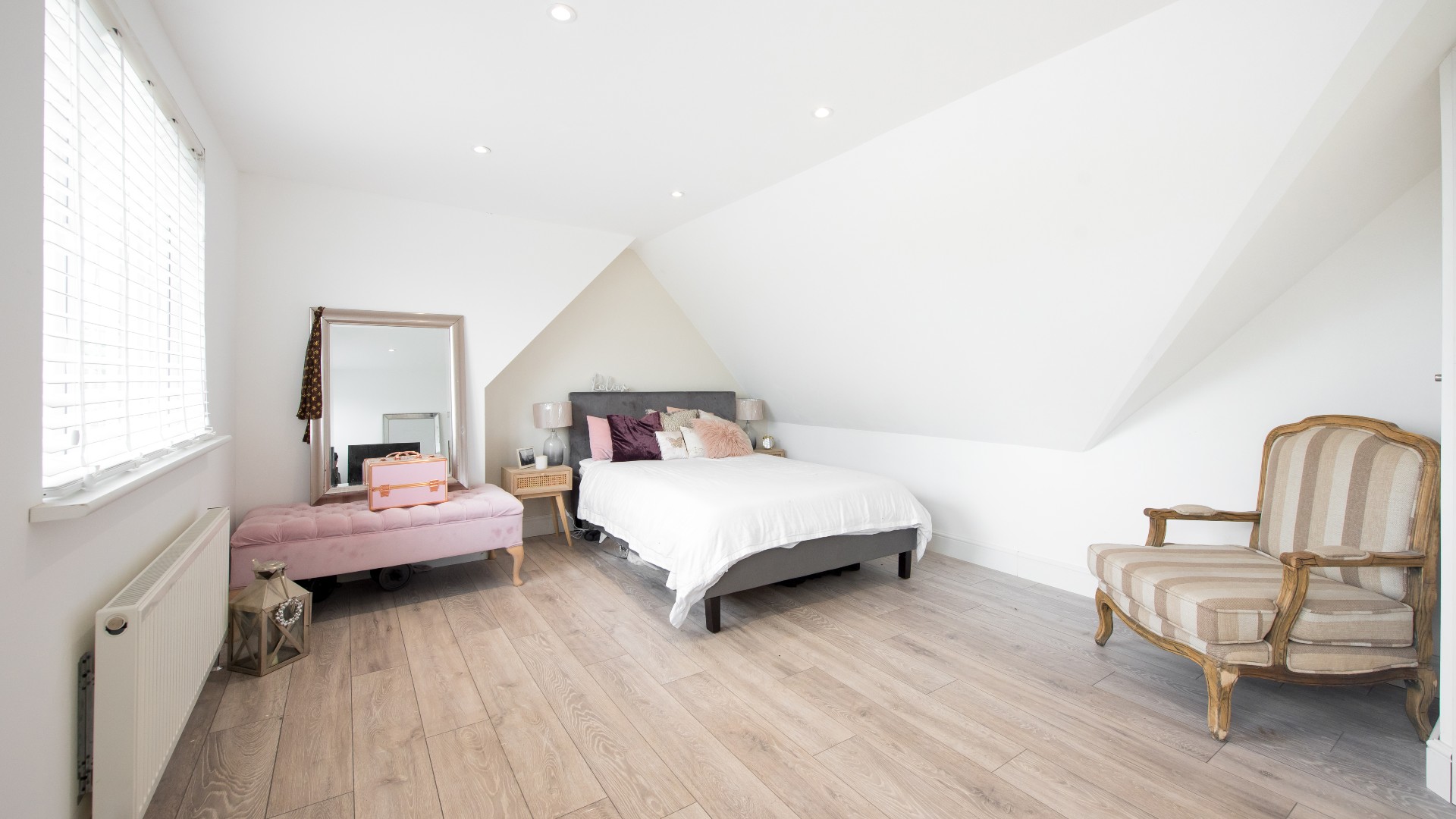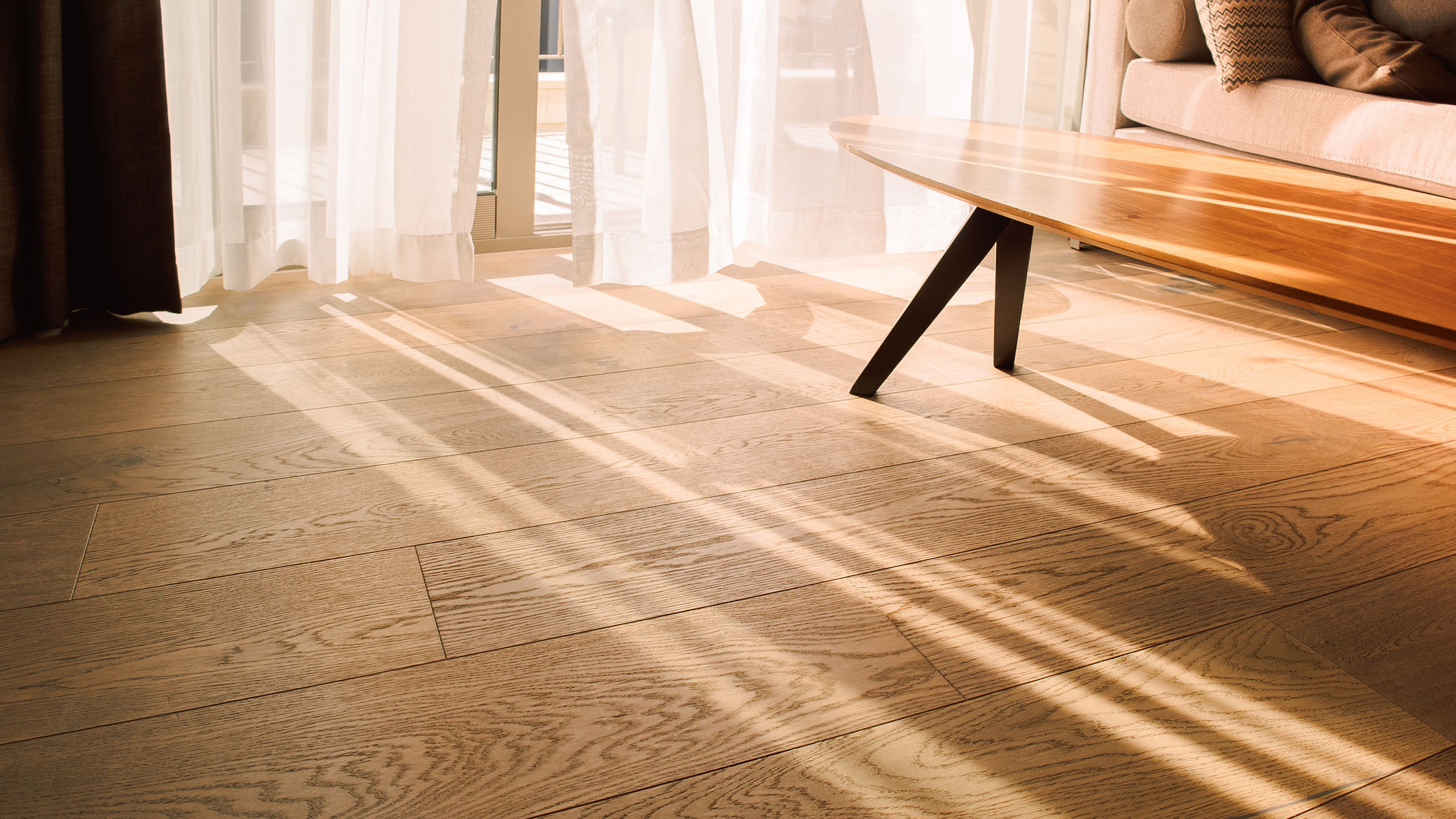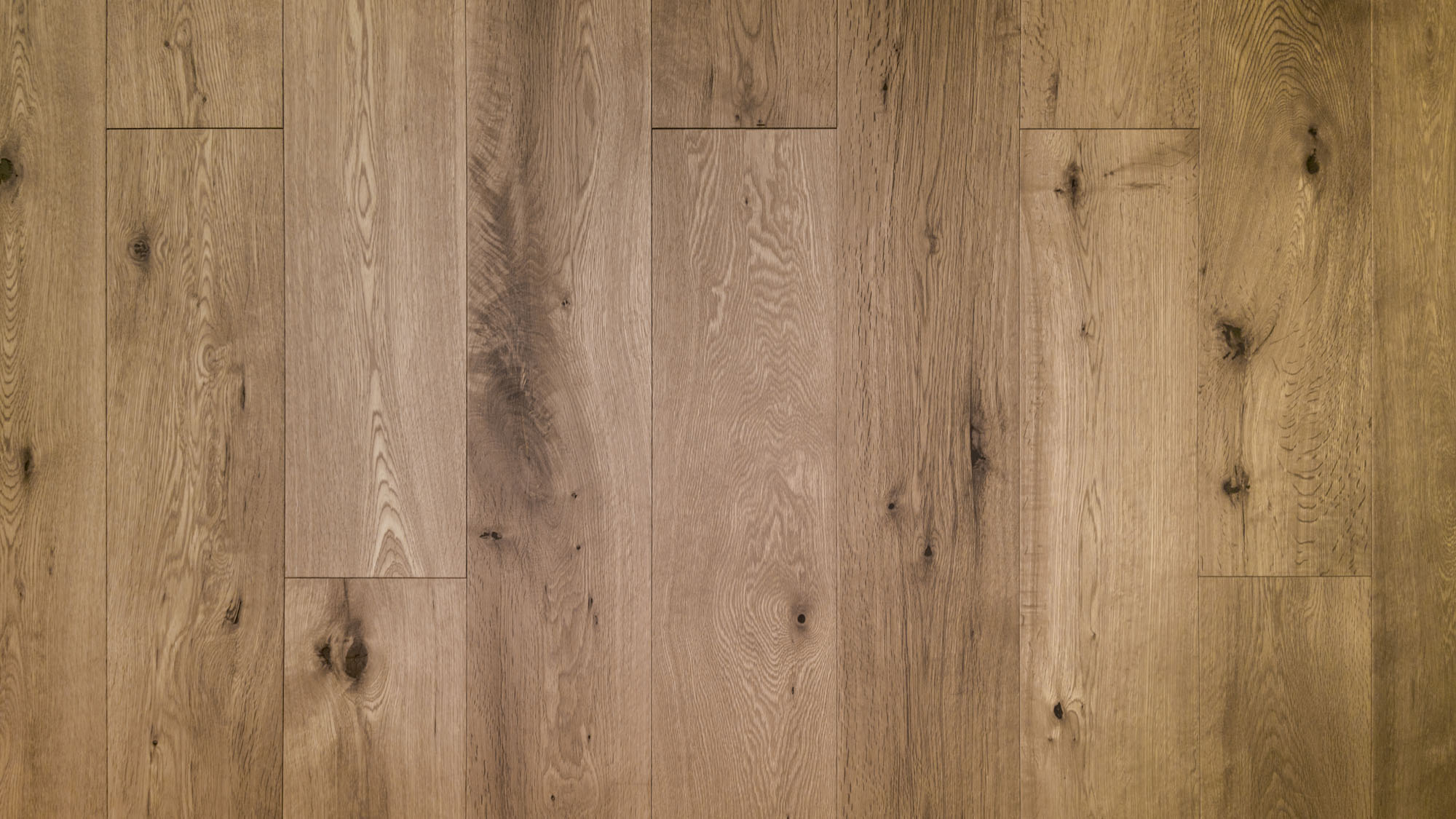How to clean laminate floors without damaging them
Knowing how to clean laminate floors is easy, and will help to keep your flooring in the best condition for years to come


It's durable and beautiful, but when it comes to how to clean laminate floors, it's important to know that you can't treat laminate as you would other flooring. Why? Not only will it not look its best if you apply a blanket approach, but you risk damaging your flooring, too.
Our laminate floors undergo a lot of stress over the years, from people walking on them, furniture scrapes, and daily spills or knicks. Luckily though – as with deep cleaning carpet – working out how to clean laminate flooring is incredibly easy and straightforward, and only requires a few tools you probably have in your cleaning cupboard anyway.
However, just as when we're learning how to clean a washing machine, how to clean an oven, or how to clean a dishwasher, knowing the right steps to take is imperative to ensuring you don't damage your laminate floors. Below, we detail how to clean laminate floors in the right order, as well as the products to avoid on this type of flooring, and how specifically to tackle any lingering stains.
How to clean laminate floors in four easy steps
1. Remove loose dirt

Sweeping and/or vacuuming is an important first step in order to ensure your flooring is free of loose daily debris, as you don't want to be simply cleaning around any dirt or crumbs.
Inga Morris Blincoe, General Manager at Lifestyle Floors said, "Start by removing any loose dirt and debris with a soft-bristled brush or vacuum cleaner, making sure the vacuum cleaner is set to the hard floor setting." It's important to use a vacuum cleaner that has a hard floor setting here, as the brush you use for carpeting can harm your laminate over time. And if you have one, an angled broom can also help you clean hard-to-reach corners and baseboards.
When sweeping, move all of the dirt into one place and either put it in a dustpan to discard, or use your vacuum cleaner to remove it. If you have pets that shed often, you may need to sweep a few times a week to keep the floor hair free, and especially before diving into your full clean.
2. Deep clean with as little water as possible
Perhaps the most important rule for how to clean laminate floors is to avoid using too much water, as this can cause the flooring to swell and bubble. Not only that, but Johanna Constantinou, Brand and Communications Director at Tapi explained, "Laminate will expand if exposed to too much water, and the joins in the laminate are particularly susceptible to water damage."
Sign up to our free daily email for the latest royal and entertainment news, interesting opinion, expert advice on styling and beauty trends, and no-nonsense guides to the health and wellness questions you want answered.
So for your regular laminate floor cleaning, use only a very small amount of water, so that the floor is damp, rather than wet.
"Lightly dampen a dry mop or cloth with water, or a drop of laminate cleaner," Inga said. You'll want to wring out your mop as much as possible, so it is almost dry. "Mop or wipe the flooring with gentle, circular motions," she continued. "Be careful not to apply too much pressure, and to use a fresh cloth or clean mop, to avoid scratches or chips on your flooring."
As for the correct laminate cleaner to use, Johanna explained that a natural option works very well. "Surprising as it may sound, the best laminate floor cleaner is plain water with a squeeze of lemon to cut through grease." Alternatively, dedicated store-bought laminate floor cleaners will also work brilliantly.
For laminate flooring, even the best steam cleaners are not recommended due to their excess moisture.
3. Spot clean any marks or stains

Given that too much water can damage your laminate floors, spot cleaning instead of an overall clean is sometimes a better option – although we'd advise following the above method every other month or so for truly clean floors. Johanna said, "When possible, spot-clean any marks or spills rather than washing the whole floor."
There can be a risk of staining with laminate floors, so if an accidental spillage does occur, use a microfiber cloth (a kitchen essential) to quickly blot up the spilled liquids – the same method you'd use for cleaning spills when cleaning a microwave.
In the event that something sticky, such as gum or wax, drops on the floor, you can also clean the spot by freezing it, using an ice pack. When frozen, use a plastic scraper to gently remove the item that's stuck to the laminate. Once the offending object has been lifted away, use a microfiber cloth to remove any leftover residue.
If there are color stains on the flooring, including marks or oily spots, acetone can be used, but only in very small amounts. When it comes to how to clean laminate floors, the gentler the better.
4. Dry your floor
"Once cleaned, immediately dry the floor with a clean, dry towel or mop to prevent any excess moisture from settling in," Inga said. Try not to use the same damp cloth or mop here that you used in the previous steps, as it won't be dry enough to soak up the remaining liquid.
This is an important final step to ensure that any leftover cleaning solution or water doesn't damage your laminate flooring—so resist the temptation to skip it!
How to clean laminate floors without leaving a film
If you can feel a film across your laminate floors – or perhaps you can see it across your floor in the sunlight – it may be because you've used incorrect products on it.
"A slight film or waxy built up starts to develop when wrong cleaning products are being used," Inga said. "In fact, you may have read advice to add a splash of washing-up liquid or another detergent, but this can leave a dull, faintly sticky residue that attracts dust and dirt over time," Johanna explained further.
If you've noticed this film on your laminate floors, there's an easy way to address it.
Using water and lemon to clean your floors on a weekly or monthly basis is ideal, as suggested above, but to get rid of the film in the first instance, Inga suggests, "combine a gallon of hot water with a cup of white vinegar. Vinegar, which is a natural cleaning agent, will break down the film without hurting the laminate surface."

How often should I clean laminate floors?
Just as it does when it comes to cleaning your kitchen, the frequency with which we should be cleaning laminate floors varies depending on the foot traffic and dirt your home experiences. Typically though, you should be sweeping/vacuuming your floor weekly, and spot cleaning as required.
And deep cleaning with water is only necessary every month or two to keep your floor looking as good as new – especially now that we know laminate has the potential to wear and get damaged from consistent water exposure.
What should you not clean laminate floors with?
As mentioned, laminate flooring is unlikely to respond well to sticky cleaning agents like dishwashing detergent, so that is one of the most important things to avoid using on it.
Similarly, Johanna explained that, because it is a more sensitive material, abrasive cleaning tools are also ill-advised. "Using harsh tools and abrasive cleaners such as bleach and ammonia can damage the laminate floors. Using steel wool to clean up tough debris is another mistake that can cause stretches or scruffs on the floor. Using wax or polishes can also damage the floor, so it’s best to avoid them."

This is also why you should be sure to set your vacuum to a hard floor setting if you have it, as its regular carpet setting has the potential to damage the delicate surface.
And as shared previously, steam cleaning is also not advised if you want to keep your floors in the best shape for years to come. "Many people think steam cleaning laminate flooring is a safe option instead of mopping, however, that can loosen the top protective layer and damage the surface," Johanna explained.
You can (and should) also protect your floors from damage, wear and tear and dirt by laying down entry mats in doorways or entryways. The mat will absorb any oils, debris, water or other substances that people track indoors from outside. Vinyl rug underlays can be placed under rugs to avoid any carpeting from scratching or damaging the floor.
On a final note, if you have cats or dogs, be sure to keep their nails properly trimmed. Their claws can scratch up your floor, even unintentionally!
Amy Hunt is an experienced digital journalist specialising in homes, interiors and hobbies. She began her career working as the features assistant at woman&home magazine, before moving over to the digital side of the brand where she eventually became the Lifestyle Editor up until January 2022. Amy won the Digital Journalist of the Year award at the AOP Awards in 2019 for her work on womanandhome.com.
